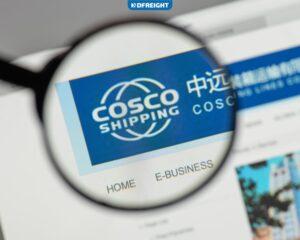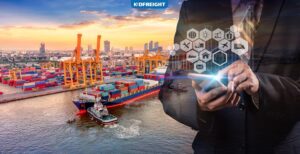In recent years, the shipping industry has made great strides in terms of technology, digital freight forwarding and E-Freight. All these terms are related to being smart and moving away from the traditional way of doing transportation steps. In this article, we examine the term e-freight. This method is an Internet-based mechanism that connects different parts of the transportation process such as sender, warehousing, transportation vehicles and the buyer. The meaning of this phrase, examples of it in the transportation sector, applications for it, and eventually its future will all be discussed in the following paragraphs.
Table of Contents
General Concepts
As the world increasingly turns to online shopping and businesses move more of their operations online, the need for electronic freight solutions is growing. Electronic freight solutions refer to the use of technology to streamline the process of shipping goods, from the initial booking of freight services to the tracking of shipments and delivery. You need to undergo a technological revolution to continue in this field and compete with other companies, or you risk being completely eliminated from it in the upcoming years.
Technology revolution of freight industry refers to the process of reassessing the role of technology in the freight industry in order to improve efficiency and competitiveness. This may involve adopting new technologies, improving existing technologies, or reassessing the use of technology in light of changes in the industry.
What do companies need to do to keep up with technological revolution? Companies need to keep up with technological revolutions by investing in research and development, by keeping up with changes in the marketplace, and by continually reassessing their business models. Investing in research and development allows companies to develop new technologies that can be used to improve their products and services. Keeping up with changes in the marketplace helps companies to identify new opportunities and to adapt their products and services to meet the needs of customers. Continually reassessing their business models helps companies to identify new ways to compete in the marketplace and to keep up with changes in the industry.
What Is E-Freight?
Electronic transportation includes inter-organizational information systems that provide an economic platform for the exchange of logistics services between carriers and freight customers on the web. The e-center has established this effective connection using web-based systems, which connect carriers and telecommunications companies. Customers can easily employ transportation services in a reliable way by using the e-freight mechanism. Freight companies, professional drivers and owners of goods can become members of the electronic freight market in accordance with national rules and regulations.
E-freight is an industry-wide initiative involving carriers, freight forwarders, ground handlers, shippers, customs brokers and customs authorities. E-freight aims to build an end-to-end paperless transportation process for air cargo through a regulatory framework, electronic messages and high data quality
IATA
Electronic Freight Goals
Let’s now examine the objectives of developing an e-transportation system. There is no single answer to this question as electronic freight goals can vary depending on the specific needs and goals of a given business or organization. However, some common goals that businesses may have concerning electronic freight include:
- Reducing costs
- Increasing efficiency
- Improving customer satisfaction
- Transparency of goods handling affairs
- Faster access to maximum freight capacity
- Reduce urban traffic
- Integration of drivers in a unified system
Some businesses may also seek to use electronic freight solutions in order to better track and manage their inventory, or to automate various aspects of their shipping and logistics processes. Additionally, businesses may use electronic freight solutions to improve communication and coordination with their suppliers and partners. Ultimately, the specific goals that a business has will depend on the specific needs and priorities of that organization.
Benefits of Electronic Freight
There are many benefits of using electronic freight in logistics industry. Perhaps the most obvious benefit is the fact that it can help to speed up the process of shipping goods from one location to another. In addition, electronic freight can help to reduce the overall cost of shipping goods since it can eliminate the need for paper documents and manual processes. Finally, electronic freight can help to improve the visibility and tracking of shipments, which can be extremely beneficial for businesses that rely on the timely delivery of goods.
We’ll explore the top seven benefits of e-freight and how it can help your business:
- Save you time and money.
- Improve communication and visibility.
- Make your supply chain more efficient.
- Help you go green.
- Improve customer service.
- Help you meet regulatory requirements.
- Future-proof your business.
Now, with a few examples, let’s look at the effects of electronic mobility on a business. Consider a corporation that tracks its shipments using cutting-edge technology. The following choices are accessible to the organization, depending on their budget situation and top priorities:
- GPS tracking
- RFID tracking
- Satellite tracking
- Cellular tracking
- Wireless tracking
Even if this was only one portion of the company’s operation, the effect of electronics on other areas of the business is substantial:
- E-freight can help you save time and money by streamlining the booking, tracking, and billing procedures.
- Additionally, e-freight can help you minimize mistakes and delays and enhance communication with your carrier.
- By giving you real-time tracking data, e-freight can assist you in improving visibility and communication. In this manner, you’ll always be aware of the location and anticipated arrival time of your shipment.
- E-freight can assist you in streamlining your supply chain by giving you visibility throughout the entire procedure. By doing this, you may spot bottlenecks and alter processes to increase effectiveness.
- E-freight can aid in being green by minimizing the amount of paper required during the freight transit process. You can track your carbon footprint and improve the sustainability of your supply chain with the aid of e-freight.
- E-freight can support your efforts to enhance customer service by giving you the data you require to keep your clients informed. You may address problems effectively and swiftly with the aid of e-freight.
- By giving you the necessary papers, e-freight may assist you in meeting regulatory obligations. You can track your compliance with requirements with the use of e-freight.
- E-freight can assist you by offering you a flexible and scalable solution if you’re trying to future-proof your company.
- E-freight can also help you meet the needs of the future by providing you with the ability to connect with new technologies.
The use of various software is another effect of electronic processes, there are many different types of electronic freight software available on the market. Some of the most popular include:
Freight Management Systems (FMS): FMS software is designed to help businesses manage their freight operations. It can track shipments, create reports, and more.
Transportation Management Systems (TMS): TMS software is designed to help businesses manage their transportation operations. It can track shipments, create reports, and more.
Logistics Management Systems (LMS): LMS software is designed to help businesses manage their logistics operations. It can track shipments, create reports, and more.
Warehouse Management Systems (WMS): WMS software is designed to help businesses manage their warehouse operations. It can track inventory, create reports, and more.
The aforementioned reviews only covered a portion of a firm, and your company can grow indefinitely with the right application of electronic freight. Utilize technology in your business field to expand your company.
How to Get Started with E-Freight
If you’re ready to get started with e-freight, there are a few things you’ll need to do:
- Choose an e-freight platform.
- Set up your account.
- Connect your carriers.
- Book your shipments.
- Track your shipments.
- Invoice your carriers.
- Pay your carriers.
- Manage your documents.
- Analyze your data.
- Continuously improve.
The above steps guide the start of an electronic process from freight platform selection to research and development. Examine them carefully and adapt them to your business so that you can get the most out of the benefits of this mechanism.
Future
The future of e-freight is bright. As the world becomes more connected, e-freight will become the norm. Carriers and shippers will adopt e-freight to improve communication and visibility, save time and money, and make their supply chains more efficient and sustainable. E-freight will also become more user-friendly, with platforms offering features like automated booking, tracking, and invoicing. And as new technologies emerge, e-freight will become even more flexible and scalable. The future of e-freight is bright, and there are many benefits to getting started with it today. If you’re ready to improve your freight transportation and logistics, e-freight is the way to go.
Conclusion
With the advancement of science and technology, people today use the Internet as a tool to facilitate their work. Now you can make even your simple purchases using the Internet. It can be said that e-freight is the future of freight transportation, and there are many benefits to getting started with it today. If you’re looking to save time and money, improve communication and visibility, or make your supply chain more efficient, e-freight is the way to go.
DFreight offers a simple, online platform that gives you instant quotes from top carriers, bookings with a few clicks, and real-time tracking of your shipments. Plus, our customer support team is available 24/7 to answer any questions you may have. Ready to get started? Contact us for a free quote today.
FAQs
How secure is electronic freight data?
Electronic freight data is typically transmitted using secure methods, such as EDI or barcodes. Additionally, most electronic freight systems are password-protected.
How accurate is electronic freight tracking?
The accuracy of electronic freight tracking depends on the tracking technologies used. In most cases, electronic freight tracking is quite accurate.
What types of data can be tracked using electronic freight?
Some of the data that can be tracked using electronic freight includes the location of shipments, estimated time of arrival, and tracking history.
How does electronic freight work?
In most cases, electronic freight involves the use of tracking technologies to track shipments throughout the supply chain. This data can then be transmitted electronically to the parties involved, such as the shipper, carrier, and consignee.














